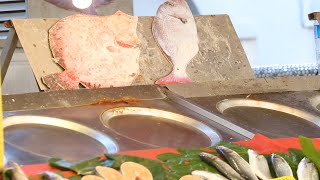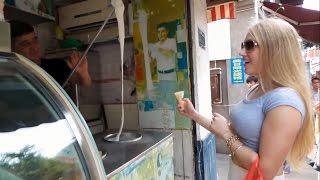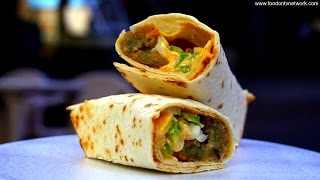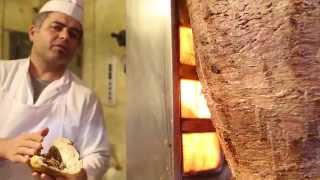Monday, 15 December, 2025г.
















Где искать: по сайтам Запорожской области, статьи, видео ролики
пример: покупка автомобиля в Запорожье
istanbul street food 'Special Video' | How Silk is made from Silkworms | turkey street food
Istanbul street food Special Video 3235 subscribe :) How Silk is made from Silkworms?
Abone Olun ►goo.gl/xDyp3Y Subscribe ►goo.gl/xDyp3Y
Silk is a natural protein fiber, some forms of which can be woven into textiles. The protein fiber of silk is composed mainly of fibroin and is produced by certain insect larvae to form cocoons.[1] The best-known silk is obtained from the cocoons of the larvae of the mulberry silkworm Bombyx mori reared in captivity (sericulture). The shimmering appearance of silk is due to the triangular prism-like structure of the silk fibre, which allows silk cloth to refract incoming light at different angles, thus producing different colors.
Silk is produced by several insects, but generally only the silk of moth caterpillars has been used for textile manufacturing. There has been some research into other types of silk, which differ at the molecular level.[2] Silk is mainly produced by the larvae of insects undergoing complete metamorphosis, but some adult insects such as webspinners also produce silk, and some insects such as raspy crickets produce silk throughout their lives.[3] Silk production also occurs in Hymenoptera (bees, wasps, and ants), silverfish, mayflies, thrips, leafhoppers, beetles, lacewings, fleas, flies, and midges.[2] Other types of arthropod produce silk, most notably various arachnids such as spiders (see spider silk).
Wild silk[edit]
Woven silk textile from tomb no 1. at Mawangdui in Changsha, Hunan province, China, from the Western Han Dynasty, 2nd century BC
Several kinds of wild silk, which are produced by caterpillars other than the mulberry silkworm, have been known and used in China, South Asia, and Europe since ancient times. However, the scale of production was always far smaller than for cultivated silks. There are several reasons for this: first, they differ from the domesticated varieties in colour and texture and are therefore less uniform; second, cocoons gathered in the wild have usually had the pupa emerge from them before being discovered so the silk thread that makes up the cocoon has been torn into shorter lengths; and third, many wild cocoons are covered in a mineral layer that stymies attempts to reel from them long strands of silk.[5] Thus, previously,[clarification needed] the only way to obtain silk suitable for spinning into textiles in areas where commercial silks are not cultivated was by tedious and labor-intensive carding.
Commercial silks originate from reared silkworm pupae, which are bred to produce a white-colored silk thread with no mineral on the surface. The pupae are killed by either dipping them in boiling water before the adult moths emerge or by piercing them with a needle. These factors all contribute to the ability of the whole cocoon to be unravelled as one continuous thread, permitting a much stronger cloth to be woven from the silk. Wild silks also tend to be more difficult to dye than silk from the cultivated silkworm.[6][7] A technique known as demineralizing allows the mineral layer around the cocoon of wild silk moths to be removed,[8] leaving only variability in color as a barrier to creating a commercial silk industry based on wild silks in the parts of the world where wild silk moths thrive, such as in Africa and South America.
Genetic modification of domesticated silkworms is used to facilitate the production of more useful types of silk.
Silk's absorbency makes it comfortable to wear in warm weather and while active. Its low conductivity keeps warm air close to the skin during cold weather. It is often used for clothing such as shirts, ties, blouses, formal dresses, high fashion clothes, lining, lingerie, pajamas, robes, dress suits, sun dresses and Eastern folk costumes. For practical use, silk is excellent as clothing that protects from many biting insects that would ordinarily pierce clothing, such as mosquitoes and horseflies. Silk's attractive lustre and drape makes it suitable for many furnishing applications. It is used for upholstery, wall coverings, window treatments (if blended with another fiber), rugs, bedding and wall hangings.[citation needed] While on the decline now, due to artificial fibers, silk has had many industrial and commercial uses, such as in parachutes, bicycle tires, comforter filling and artillery gunpowder bags.
A special manufacturing process removes the outer irritant sericin coating of the silk, which makes it suitable as non-absorbable surgical sutures. This process has also recently led to the introduction of specialist silk underclothing for people with eczema where it can significantly reduce it.[44][45] New uses and manufacturing techniques have been found for silk for making everything from disposable cups to drug delivery systems and holograms.[46] To produce 1 kg of silk, 104 kg of mulberry leaves must be eaten by 3000 silkworms. It takes about 5000 silkworms
Теги:
Bombyx mori silk silkworm Bombyx (Organism Classification) How silkworms make silk how silk is made silkworms making silk how its made how to make silk ipek nasıl yapılır ipek böcüğü istanbul street food turkey street food street food istanbul street food turkey street food in istanbul street food in turkey turkish culture turkish street food street food turkish street food around the world istanbul street food turkey food turkish food istanbul food
Похожие видео
Мой аккаунт


 У вашего броузера проблема в совместимости с HTML5
У вашего броузера проблема в совместимости с HTML5


